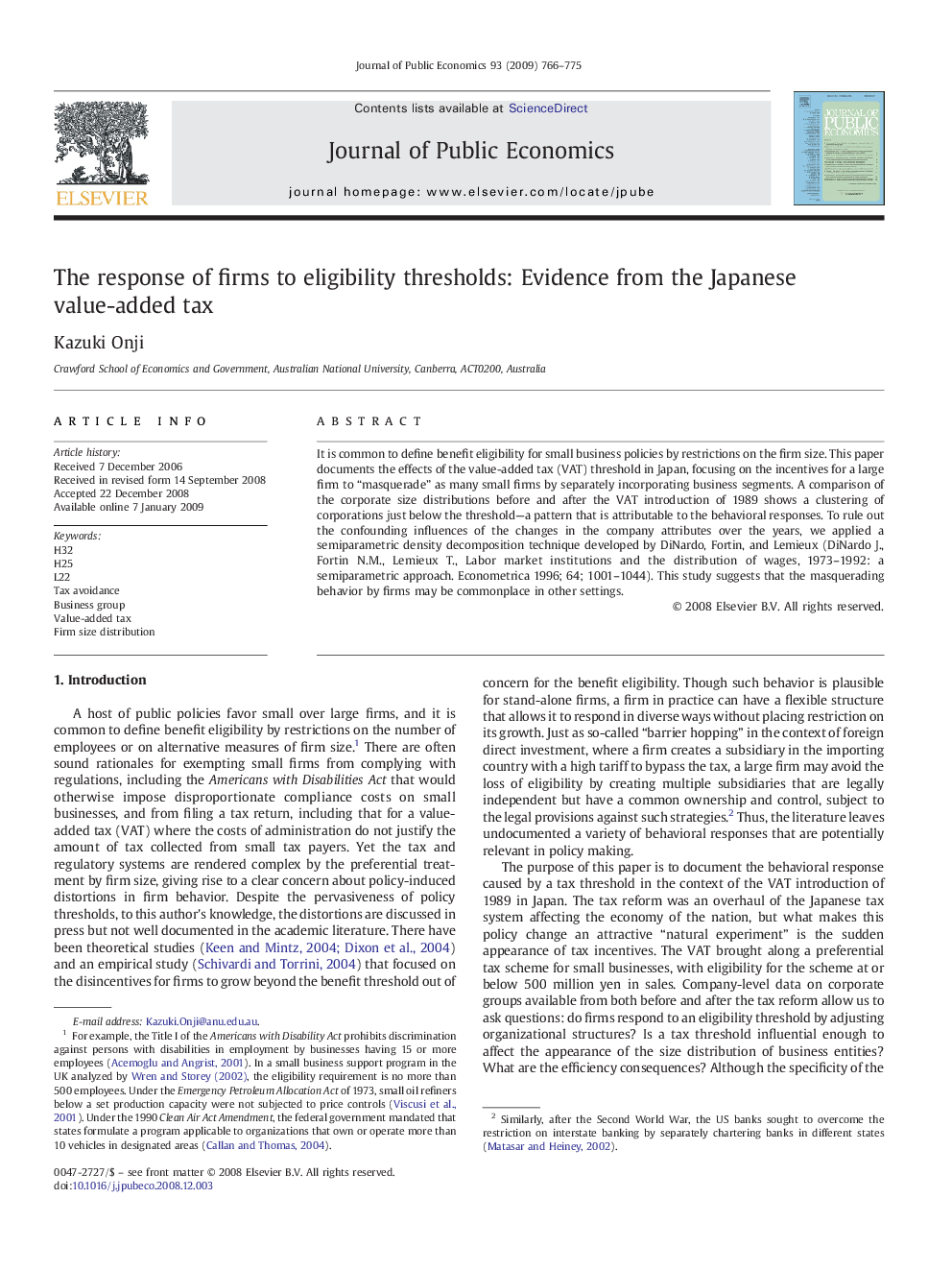| Article ID | Journal | Published Year | Pages | File Type |
|---|---|---|---|---|
| 969472 | Journal of Public Economics | 2009 | 10 Pages |
It is common to define benefit eligibility for small business policies by restrictions on the firm size. This paper documents the effects of the value-added tax (VAT) threshold in Japan, focusing on the incentives for a large firm to “masquerade” as many small firms by separately incorporating business segments. A comparison of the corporate size distributions before and after the VAT introduction of 1989 shows a clustering of corporations just below the threshold—a pattern that is attributable to the behavioral responses. To rule out the confounding influences of the changes in the company attributes over the years, we applied a semiparametric density decomposition technique developed by DiNardo, Fortin, and Lemieux (DiNardo J., Fortin N.M., Lemieux T., Labor market institutions and the distribution of wages, 1973–1992: a semiparametric approach. Econometrica 1996; 64; 1001–1044). This study suggests that the masquerading behavior by firms may be commonplace in other settings.
